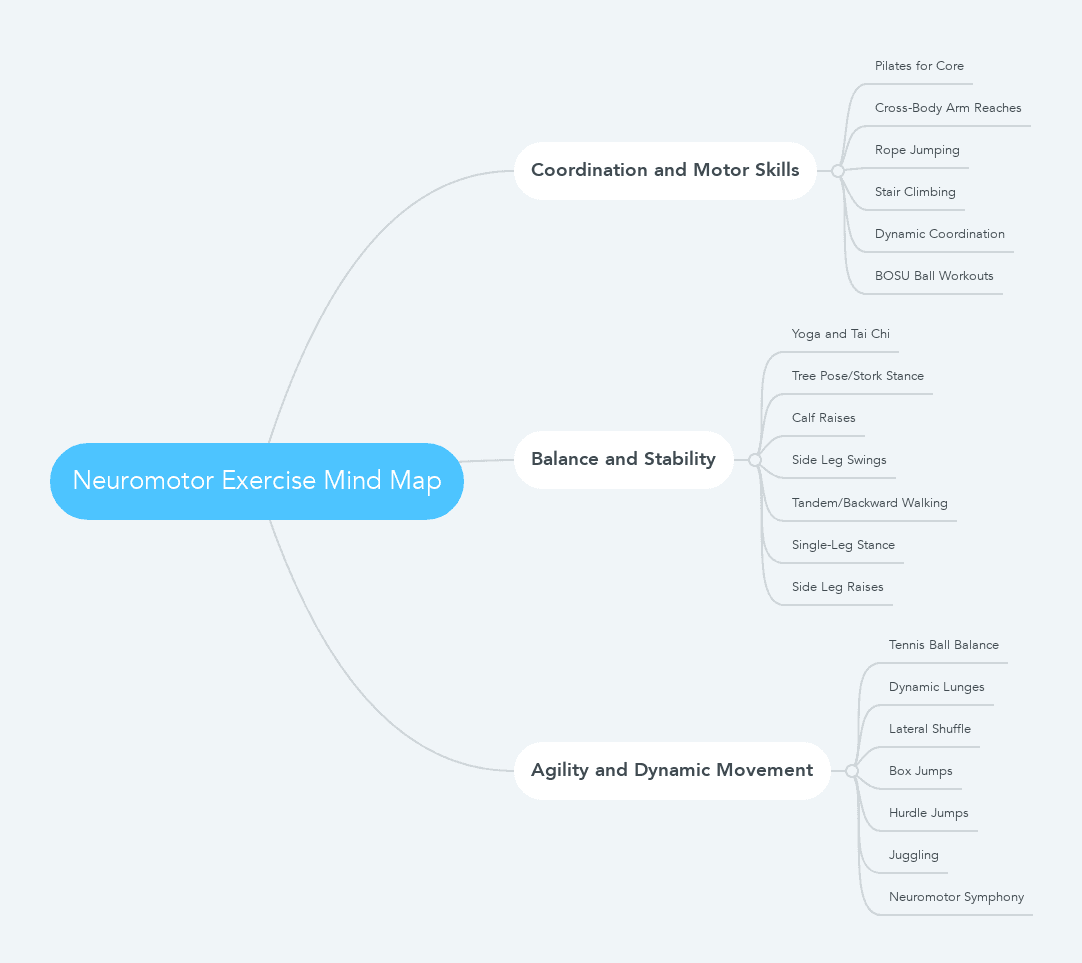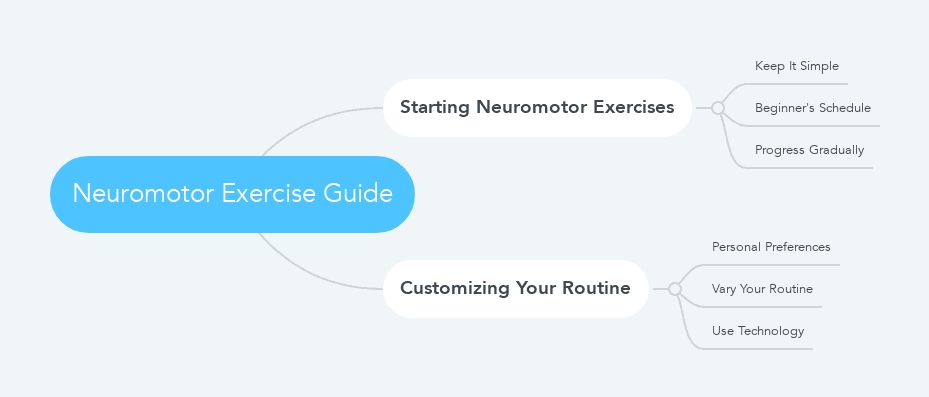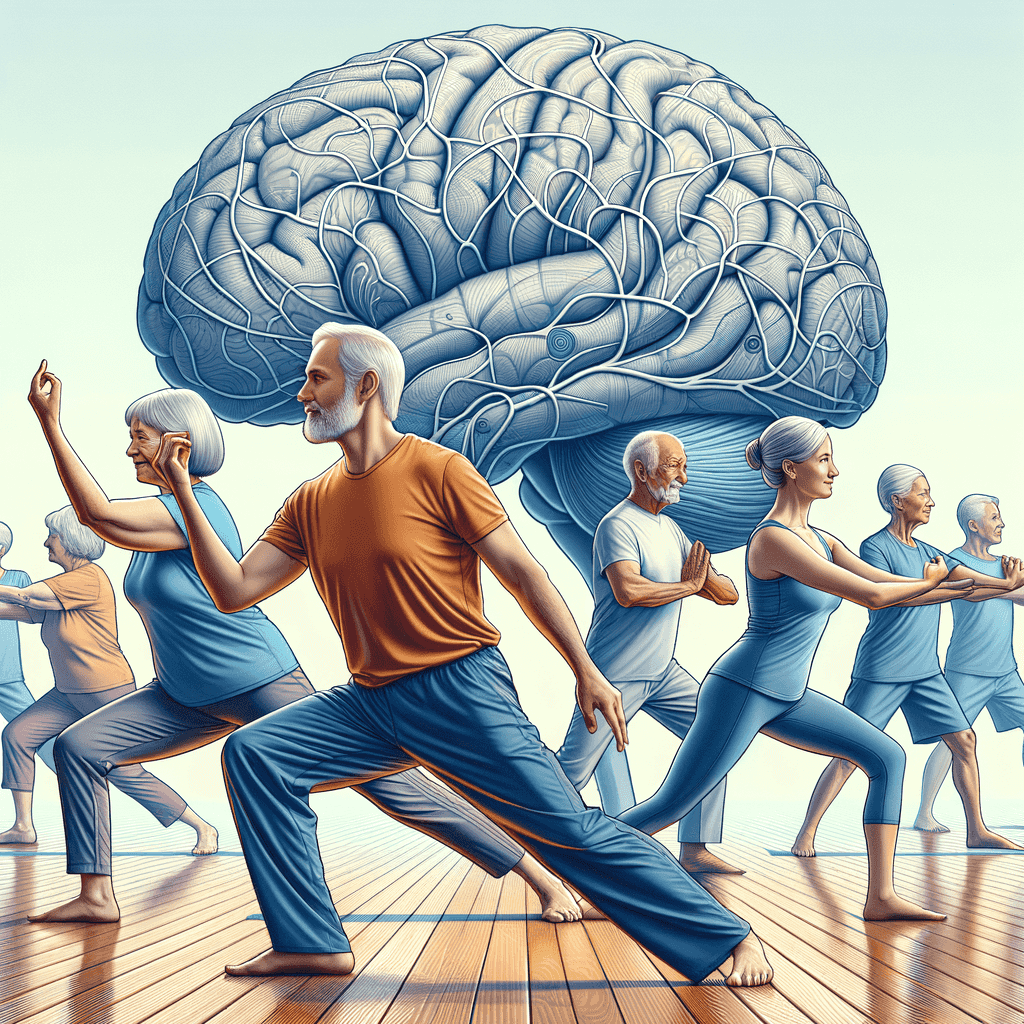Understanding Neuromotor Exercises
The Basics of Neuromotor Exercises
Neuromotor exercises help our muscles and nerves work better together. These activities focus on improving balance, coordination, and proprioception. Proprioception is our sense of where our body is in space, which helps us move smoothly and avoid falling.
What's special about these exercises is that they copy movements we do every day. For example, standing on one foot helps with balance, while catching a ball improves how well we use our eyes and hands together. Because these exercises are like the actions we do all the time, practicing them can make daily tasks easier and safer.
Benefits of Neuromotor Training
Adding neuromotor training to your routine has many benefits. It's great for preventing injuries and also helps people recover from them. By making our muscles respond better to our brain's signals, we can move more easily and lower the chance of getting hurt.
These exercises are for everyone - kids learning to move, older adults wanting to stay active and safe, athletes aiming to get better at their sport, and anyone with nerve conditions. They can be changed to fit different needs and fitness levels.
One of the best things about neuromotor training is how it helps your brain. Doing these exercises keeps your brain active, encouraging it to make new connections and even grow new cells. This doesn't just help with thinking skills but also keeps your brain healthy overall.
Examples of Neuromotor Exercises

Balance and Stability Exercises
For better balance and stability, some exercises really help. Yoga and Tai Chi are two activities known for making you steadier on your feet. They include moves that need careful control, helping you feel more balanced.
Exercises like the Yoga Tree Pose and Stork Stance make you hold a pose for a while, which strengthens your legs and helps with balance. Doing Calf Raises and Side Leg Swings builds up the muscles you need to stay steady. If you want to walk more smoothly, try Tandem Walking and Backward Walking. These help with keeping balanced while moving. Single-Leg Stance and Side Leg Raises are also good for working on how well you can hold your balance.
Coordination and Motor Skills Exercises
Getting better at coordination and motor skills makes moving around smoother and easier. Pilates focuses on making your core strong, which is important for moving well. It gets your body ready for more complex moves.
Doing Cross-Body Arm Reaches works out different parts of your body together, which is good for coordination. Rope Jumping and Stair Climbing are not only good for your heart but also need good timing, helping with motor skills. Dynamic Coordination Exercises make you quickly adapt to new movements. For an extra challenge in staying steady, BOSU Ball Workouts make you balance on an unsteady surface, testing your body's sense of position.
Agility and Dynamic Movement Exercises
Being quick and able to move fast is key for sports or any fast-paced activities. Exercises like Tennis Ball Balance work on being agile while keeping focused. Dynamic Lunges and Lateral Shuffle are great for building quick power as well as improving how well you move together.
Box Jumps and Hurdle Jumps ask your body to put out a lot of energy quickly, which is perfect for getting more agile. For a fun way to get better at moving quickly, try Juggling—it's surprisingly good at improving how well you coordinate your hands and eyes. Lastly, Neuromotor Symphony exercises involve complex moves that challenge how well different parts of your body work together—great for athletes or anyone wanting to improve their movement skills.
Neuromotor Exercises for Specific Populations
Neuromotor Exercises for Kids and Older Adults
Neuromotor exercises are important for kids and older adults. For kids, these activities help them learn how to move smoothly and keep their balance. It's all about helping them grow strong and coordinated.
For older adults, these exercises are a way to prevent falls, which can be a big problem. The exercises are made to fit their level of fitness, so they can safely get better at keeping their balance and moving around. It's not about pushing hard but keeping up a good quality of life with independence.
Neuromotor Exercises for Neurological Conditions
People with conditions like Parkinson's disease or multiple sclerosis face unique challenges. That's why their neuromotor exercises need to be specially made for them. These exercises help manage symptoms and keep as much normal function as possible.
The main idea is to adjust the exercises to fit the person's needs, considering how their condition affects them day by day. It's about making a plan that sees where they're at and helps them stay as healthy as possible.
Neuromotor Exercises in Rehabilitation and Athletic Performance
In rehab, neuromotor exercises use the body's ability to change and heal (neuroplasticity). After an injury, these activities are key in helping people get back their strength and ability by encouraging the brain and body to work together again.
Athletes can also benefit from these exercises but in a different way. For them, it's about improving specific skills or muscles needed for their sport. The great thing about neuromotor exercises is that they can be changed to focus on what an athlete needs most, like quickness, strength, or balance.
The Science Behind Neuromotor Exercises
Neuromotor exercises are about more than just moving. They help strengthen the link between your brain and muscles, which is key for both your mental and physical health. Let's simplify the science behind it.
First, let's talk about neurogenesis and brain plasticity. Neurogenesis means making new brain cells, mainly in a part of the brain that's important for learning and remembering things. Brain plasticity is the brain's ability to change and adapt over time. Both are crucial for keeping our minds and bodies in good shape.
BDNF (brain-derived neurotrophic factor) plays a big role here. Think of BDNF as a kind of 'food' for the brain that helps new brain cells grow strong. It's released when you do neuromotor exercises, so being active not only helps your body but also feeds your brain.
These exercises also help balance neurotransmitters, which are like messengers in the brain that affect how we feel and think. Keeping these messengers working well can improve mood and how we think.
Chronic inflammation can hurt both our bodies and brains. The good news is, neuromotor exercises can lower inflammation, protecting us from these harms.
The way your brain talks to your muscles also gets better with neuromotor exercises, thanks to something called myokines. These are released by muscles during exercise and help this communication become more efficient - like making the conversation between your brain and muscles smoother with each workout.
Looking to the future, tools like brain-computer interfaces and neurofeedback show promise in making neuromotor training even more effective. These technologies could help us track progress and customize exercises for better results.
Incorporating Neuromotor Exercises into Your Routine

Starting with Neuromotor Exercises
First off, keep it simple. This makes sure you're exercising safely and well. You don't need much equipment, so it's easy to start without a big spend. At first, aim for short practice times that easily fit into your day. For beginners, doing these exercises two or three times a week for about 20-30 minutes each time is a good start.
As you get better and more comfortable, slowly make the exercises harder. This could mean adding tougher moves or balance tasks as you go along. The main thing is to take it slow, letting your body get used to the new challenges without getting hurt.
Making Neuromotor Exercises Fit Your Life
When it comes to neuromotor exercises, there's no one-size-fits-all. You might like group classes for their fun vibe and learning from an instructor while being with others. Or, doing it on your own might be better for you, letting you tailor the workout exactly to what you want and need.
To keep it interesting and work well, mix up your routine. This could mean trying different kinds of neuromotor exercises or changing up the moves you do. It's important to keep your mind engaged just as much as working out your muscles.
Lastly, technology can really help boost your neuromotor exercise experience. Apps can guide you through workouts, while wearable tech gives feedback on how you're doing and tracks your progress over time. These tools can be super helpful for seeing how much you improve and making sure you're moving towards your fitness goals.









